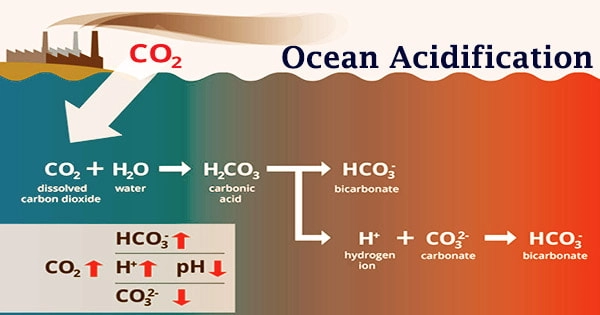By studying the plate tectonics that existed billions of years ago using microscopic mineral crystals known as zircons, scientists have traveled back in time to solve the riddles of Earth’s early history. A complicated interaction between the Earth’s crust, core, and the genesis of life is shown by the research, which gives light on the conditions that existed in the early Earth.
In order to create continents and other geological characteristics crucial for the emergence of life, plate tectonics permits heat from the Earth’s interior to escape to the surface.
Accordingly, “there has been the assumption that plate tectonics is necessary for life,” says John Tarduno, who teaches in the Department of Earth and Environmental Sciences at the University of Rochester. But new research casts doubt on that assumption.
Tarduno, the William R. Kenan, Jr. Professor of Geophysics, is lead author of a paper published in Nature examining plate tectonics from a time 3.9 billion years ago, when scientists believe the first traces of life appeared on Earth.
The researchers found that mobile plate tectonics was not occurring during this time. They found that Earth was actually leaking heat through a mechanism known as a stagnant lid. The findings suggest that while plate tectonics is important for supporting life on Earth, it is not necessary for life to have originated on a planet with a similar composition to Earth.
“We found there wasn’t plate tectonics when life is first thought to originate, and that there wasn’t plate tectonics for hundreds of millions of years after,” says Tarduno. “Our data suggests that when we’re looking for exoplanets that harbor life, the planets do not necessarily need to have plate tectonics.”
Early Earth was not a planet where everything was dead on the surface. Things were still happening on Earth’s surface; our research indicates they just weren’t happening through plate tectonics. We had at least enough geochemical cycling provided by the stagnant lid processes to produce conditions suitable for the origin of life.
John Tarduno
An unexpected detour from a study of zircons
The researchers did not originally set out to study plate tectonics.
“We were studying the magnetization of zircons because we were studying Earth’s magnetic field,” Tarduno says.
Zircons are microscopic magnetic crystals that can preserve the Earth’s magnetic field at the time they were generated. Researchers can create a chronology detailing the evolution of the Earth’s magnetic field by dating the zircons.
The strength and direction of Earth’s magnetic field change depending on latitude. For instance, the equator has the weakest and strongest current magnetic fields. Scientists can determine the relative latitudes at which the zircons developed by using information about the magnetic characteristics of zircons.
That is, if the geodynamo, the mechanism that creates the magnetic field, operates at a constant efficiency and the intensity of the field changes with time, the latitude at which the zircons produced must likewise change.
However, Tarduno and his team found the opposite: zircons from South Africa they analyzed showed that over the time from roughly 3.9 to 3.4 billion years ago, the magnetic field’s strength did not change, indicating that the latitudes did not shift either.
Because plate tectonics includes changes in latitudes of various land masses,” Tarduno says, “plate tectonic motions likely weren’t occurring during this time and there must have been another way Earth was removing heat.””
Further reinforcing their findings, the researchers found the same patterns in zircons they studied from Western Australia.
“We aren’t saying the zircons formed on the same continent, but it looks like they formed at the same unchanging latitude, which strengthens our argument that there wasn’t plate tectonic motion occurring at this time,” Tarduno says.
Stagnant lid tectonics: An alternative to plate tectonics
Earth is a heat engine, and plate tectonics is ultimately the release of heat from Earth. However, stationary lid tectonics, which causes cracks in the surface of the Earth, is another method for letting heat escape from the planet’s center to create continents and other geological features.
The horizontal movement and interaction of substantial plates on the surface of the Earth is referred to as plate tectonics. Tarduno and his colleagues report that, on average, plates from the last 600 million years have moved at least 8,500 kilometers (5280 miles) in latitude. The outermost layer of the Earth, on the other hand, acts as a stagnant lid without active horizontal plate motion, according to the stagnant lid tectonic theory.
Instead, the outer layer remains in place while the interior of the planet cools. The outer layer may split as a result of large plumes of molten material coming from the deep interior of the Earth. Although it is less efficient than plate tectonics at releasing heat from the Earth’s mantle, stagnant lid tectonics can nonetheless result in the development of continents.
“Early Earth was not a planet where everything was dead on the surface,” Tarduno says. “Things were still happening on Earth’s surface; our research indicates they just weren’t happening through plate tectonics. We had at least enough geochemical cycling provided by the stagnant lid processes to produce conditions suitable for the origin of life.”
Maintaining a habitable planet
“While Earth is the only known planet to experience plate tectonics, other planets, such as Venus, experience stagnant lid tectonics,” Tarduno says.
“People have tended to think that stagnant lid tectonics would not build a habitable planet because of what is happening on Venus,” he says. “Venus is not a very nice place to live: it has a crushing carbon dioxide atmosphere and sulfuric acid clouds. This is because heat is not being removed effectively from the planet’s surface.”
Without plate tectonics, Earth may have met a similar fate. The geology community disagrees on the exact time that plate tectonics began on Earth, despite the researchers’ hints that it may have happened soon after 3.4 billion years.
“We think plate tectonics, in the long run, is important for removing heat, generating the magnetic field, and keeping things habitable on our planet,” Tarduno says. “But, in the beginning, and a billion years after, our data indicates that we didn’t need plate tectonics.”
















